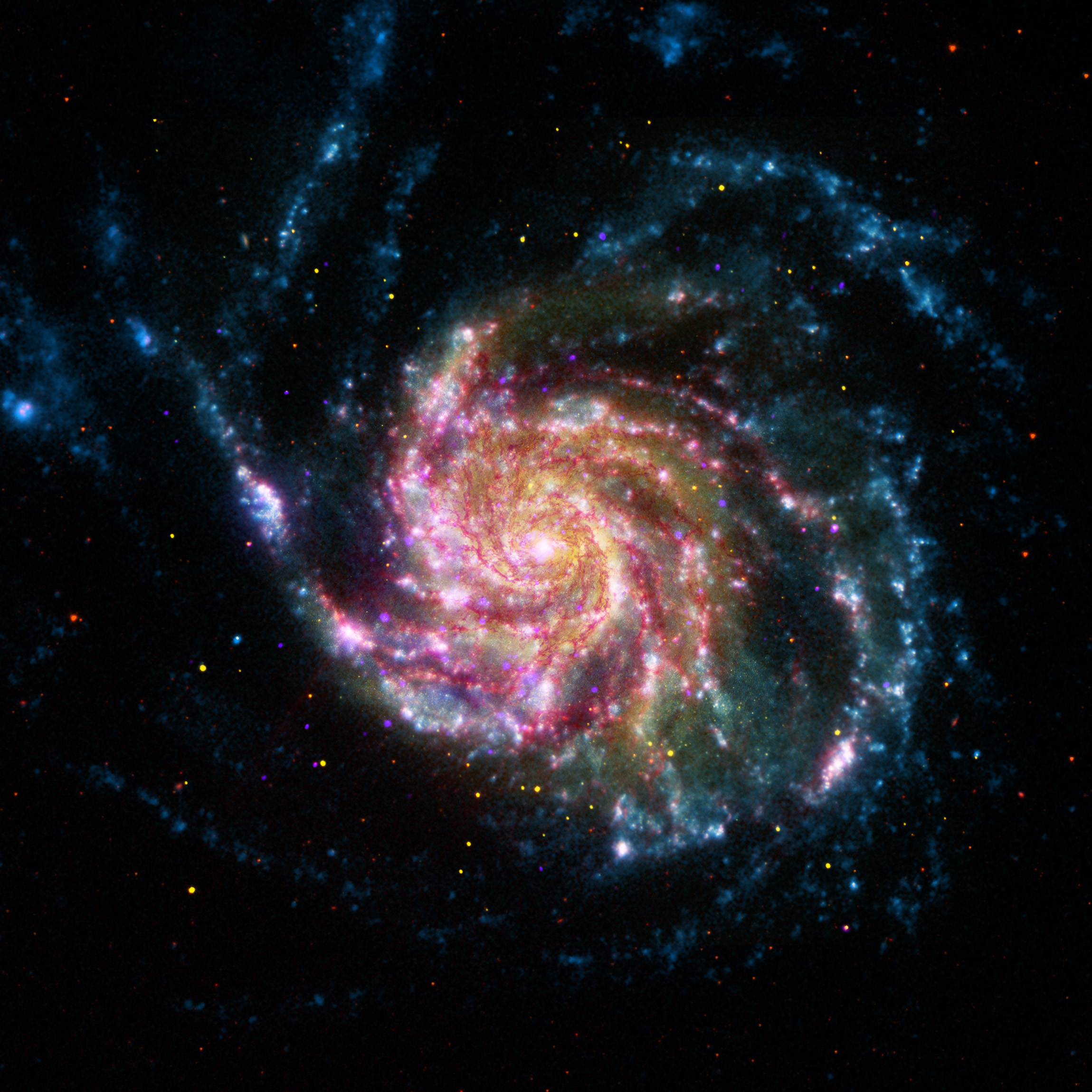
Copyright:
原文:
One of the last entries in Charles Messier’s famous catalog, big, beautiful spiral galaxy M101 is definitely not one of the least. About 170,000 light-years across, this galaxy is enormous, almost twice the size of our own Milky Way Galaxy. M101 was also one of the original spiral nebulae observed with Lord Rosse’s large 19th century telescope, the Leviathan of Parsontown. In contrast, this multiwavelength view of the large island universe is a composite of images recorded by space-based telescopes in the 21st century. Color coded from X-rays to infrared wavelengths (high to low energies), the image data was taken from the Chandra X-ray Observatory (purple), the Galaxy Evolution Explorer ( blue), Hubble Space Telescope(yellow), and the Spitzer Space Telescope(red). While the X-ray data trace the location of multimillion degree gas around M101’s exploded stars and neutron star and black hole binary star systems, the lower energy data follow the stars and dust that define M101’s grand spiral arms. Also known as the Pinwheel Galaxy, M101 lies within the boundaries of the northern constellation Ursa Major, about 25 million light-years away. (Editor’s Note: Original APOD retracted on January 25.)
中文翻譯:
🌌 被譽為“旋轉羽毛銀河”的 M101 是一個壯觀的螺旋星系,位於北天星座大熊座,距離我們約 2500 萬光年。這個銀河系的直徑大約有 17 萬光年,幾乎是我們的銀河系的兩倍大小。M101 是查爾斯·梅西耶著名目錄中的最後一個條目之一,也是 19 世紀初由洛斯爵士的 Leviathan of Parsonstown 大型望遠鏡首次觀測的原始螺旋星雲之一。
這幅由多個波段的影像組成的復合圖,顯示了 M101 的美麗。圖像數據來自 21 世紀的太空望遠鏡,包括:查德拉 X 射線天文台(紫色)、銀河演化探測器(藍色)、哈伯太空望遠鏡(黃色)以及斯匹策太空望遠鏡(紅色)。X 射線數據描繪了 M101 中多百萬度氣體的所在,這些氣體與超新星、神秘的中子星及黑洞雙星系統有關。而較低能量的數據則顯示了構成 M101 壯觀螺旋臂的星星和塵埃。
#M101 #PinwheelGalaxy #ChandraXrayObservatory #HubbleSpaceTelescope #SpitzerSpaceTelescope #CosmicWonder #UrsaMajor #Astronomy #SpaceExploration #螺旋星系 #大熊座 #天文學 #太空探索
來源:NASA每日圖片


